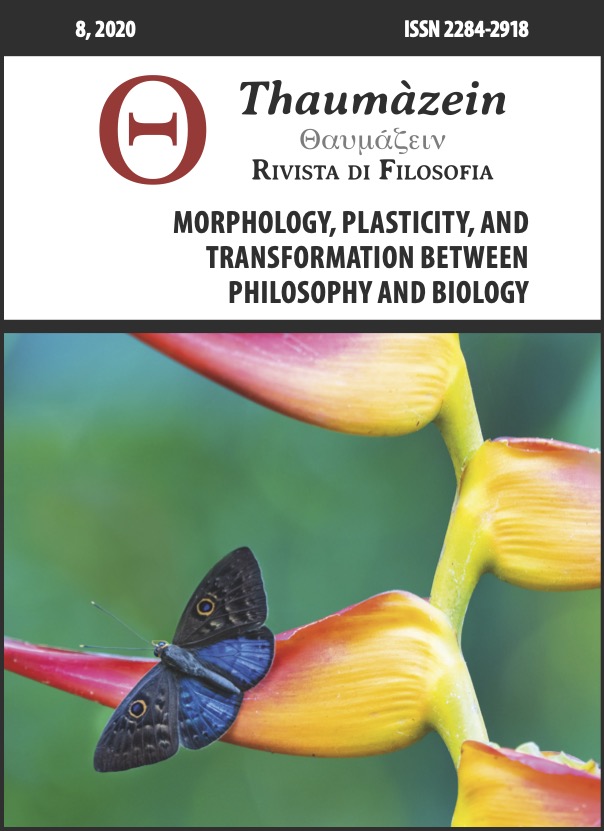Beyond the arché. Aristotle, Goethe, Heidegger, Schürmann
DOI:
https://doi.org/10.13136/thau.v8i1.114Keywords:
Morphology, Form, kinesis, Art, LifeAbstract
The aim of this article is to rethink the indispensable connection between aesthetics and life sciences. According to a consolidated tradition, the fundamental point of intersection between the two disciplines is represented by the concept of form. It is therefore to morphology that the task of thinking about the nature of form and the form of nature is ascribed. In this sense, Goethe and the debates on morphology arising from his texts represent an essential speculative starting point. However, the Goetheian teaching is, in this context, even more compelling, because morphology is already configured as a science of form that suspends the kinetic difference between natural and artificial beings, between nature and art/technique. If nature, physis, has still been thought of by Aristotle as the realm of arché, it will be a question of comprehend how, through the testimony of Heidegger and Schürmann, it is possible to metaphysically found morphology by understanding the essential “anarchic” character of nature.
Downloads
Published
Issue
Section
License
Copyright (c) 2021 Pier Alberto Porceddu Cilione

This work is licensed under a Creative Commons Attribution-NonCommercial-ShareAlike 4.0 International License.
The contents of this work are protected under a Creative Commons 4.0 Attribution-NonCommercial-4.0
International License (https://creativecommons.org/ licenses/by-nc/4.0).


